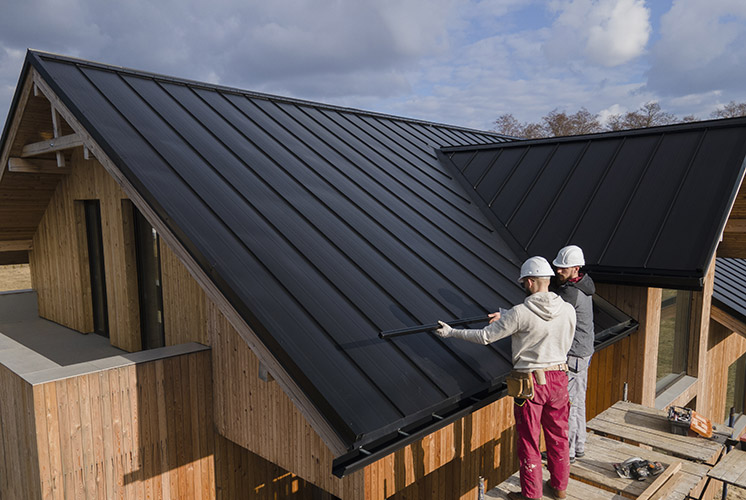The roof is a critical barrier for a home, not only protecting against the elements but also resisting potential threats such as fire. Installing a fireproof layer can provide effective protection during emergencies, slowing the spread of flames and safeguarding property and lives. The expertise involved in fireproofing lies not only in material selection but also in meticulous installation methods. This article explores the selection of fireproof materials, installation techniques, and the protection of key areas, providing a comprehensive understanding of the purpose and installation details of roof fireproofing layers.
Choosing the Right Fireproof Materials
Different fireproof materials offer varying levels of fire resistance and durability. Selecting the most suitable material is the first step in installing a fireproof layer.
Fire-Resistant Gypsum Board
Fire-resistant gypsum board is a commonly used roofing material with excellent fire resistance and impact strength. It contains moisture that releases steam when exposed to heat, lowering temperatures and slowing flame spread. Lightweight and cost-effective, it is ideal for residential fireproofing.
Flame-Retardant Insulation Board
Flame-retardant insulation boards are manufactured using high-temperature pressing techniques, resulting in high density and strong fire resistance. They also provide excellent insulation, making them suitable for structures requiring higher fireproofing standards. These boards resist moisture and mould, making them perfect for humid or water-prone roof environments.
Fireproof Glass Fibre Mat
Made of heat-resistant glass fibres, fireproof glass fibre mats deliver exceptional fire resistance. They are soft and flexible, ideal for irregular roof areas. With high heat resistance and low thermal conductivity, they effectively block heat transfer during a fire, making them a high-performance choice.
Ensuring Roof Structural Safety
Before installing a fireproof layer, it is crucial to inspect and reinforce the roof’s structure. Even the best fireproof materials require a sturdy foundation.
Inspecting Beams and Supports
Examine roof beams and supports to ensure they are free from cracks, rot, or looseness. If the structure is aged or damaged, consider reinforcement or replacement to prevent future risks.
Assessing Load Capacity
Fireproof materials are often heavier than standard roofing materials. Assess the roof’s load-bearing capacity to ensure it can support the added weight. Reinforcing beams or supports may be necessary to enhance structural integrity.
Attention to Detail in Installation
The installation process should focus on every detail to maximize fireproofing effectiveness.
Tight Board Joints
Ensure fireproof boards are tightly joined to avoid gaps, which can allow flames or heat to penetrate. Use high-temperature-resistant fireproof adhesives to seal joints and prevent fire spread.
Enhanced Protection for Edges and Corners
Edges and corners are vulnerable to fire. Reinforce these areas with additional layers of fireproof material and seal them with fireproof coatings or strips for added protection.
Protection of Ventilation Channels
Ventilation outlets and smoke vents are critical areas in roof fireproofing. These areas must balance fire protection with functionality.
Fireproof Barriers
Install fireproof barriers at ventilation and smoke vent openings to prevent fire from spreading into ventilation systems. These barriers are made from fire-resistant materials and maintain airflow while blocking flames.
Fireproof Seals
Use fireproof seals around openings to close gaps and block flames and smoke. These seals are heat-resistant and elastic, adapting to thermal expansion and contraction to ensure a tight seal.
Post-Installation Testing and Maintenance
Testing and regular maintenance ensure the long-term effectiveness of the fireproof layer.
Fire Source Testing
Perform small-scale fire source tests to confirm the fireproof layer withstands high temperatures without damage. These tests validate the installation’s protective standards.
Routine Inspections and Repairs
Even durable fireproof materials can deteriorate due to weather exposure. Conduct annual inspections, especially for exposed sections of the roof. Repair or replace any aged, cracked, or detached materials promptly to maintain optimal fire protection.
Conclusion
Installing a roof fireproof layer is a vital step in ensuring home safety. Choosing appropriate materials and combining them with precise installation techniques provide long-lasting fire protection. With regular testing and maintenance, the fireproof layer will remain an effective shield, enhancing safety and peace of mind for homeowners.


